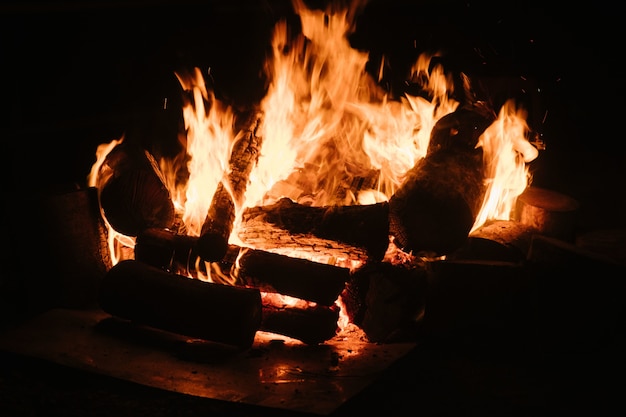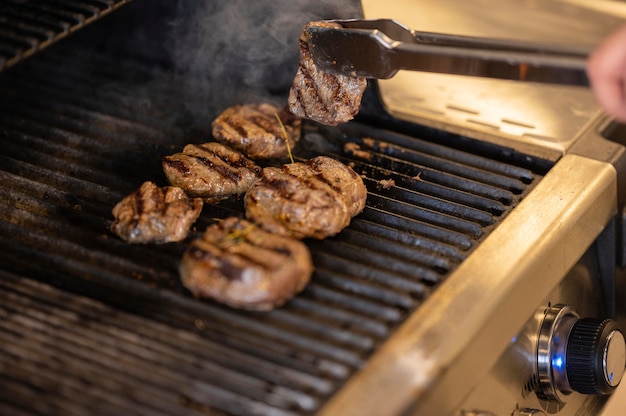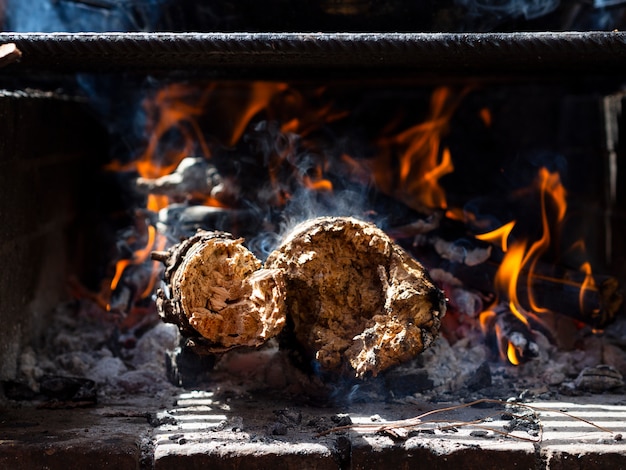Are all wood pellets the same?
Wood pellets have gained popularity in recent years as a renewable and efficient source of fuel. With their low carbon footprint and sustainable nature, wood pellets have become an attractive option for heating homes and powering industries.
Understanding Wood Pellets
Wood pellets are made from compacted sawdust or other types of biomass, such as wood chips or agricultural residues. They are commonly used in pellet stoves, boilers, and furnaces as a replacement for fossil fuels like coal or oil. The process of pelletizing involves drying the raw materials and compressing them under high pressure into small cylindrical shapes.
Differences in Quality
While wood pellets may appear similar, not all pellets are created equal. Quality variations can arise from differences in the raw materials used, the manufacturing process, and the overall pellet composition. These factors can affect the performance, efficiency, and longevity of the pellets.
One key aspect to consider is the moisture content of the pellets. High-quality wood pellets typically have a moisture content of less than 10%, allowing for optimal combustion and heat output. Pellets with higher moisture levels may produce less heat and leave behind more ash and pollutants.
The density of the pellets also plays a role in their quality. Denser pellets tend to have a higher energy content and burn more efficiently. A higher density can indicate better compression during the manufacturing process, resulting in pellets that hold their shape and do not crumble easily.
Certifications and Standards
To ensure consistent quality and consumer confidence, various certifications and standards exist in the UK for wood pellets. The main certification body in the UK is the ENplus scheme, which provides a well-recognized quality label for wood pellets. The ENplus certification guarantees that the pellets meet specific requirements related to their composition, size, and performance.
“Choosing wood pellets with the ENplus certification gives consumers peace of mind, knowing that they are using a reliable and high-quality fuel source for their heating needs,” says John Smith, a representative from a leading wood pellet supplier.
Additionally, the Biomass Suppliers List (BSL) is a UK government initiative that certifies sustainable biomass fuels, including wood pellets. Being on the BSL ensures that the pellets are sourced from legal and sustainable sources, helping individuals and businesses make environmentally responsible choices.
Considerations for Purchasing
When purchasing wood pellets, it is important to consider your specific heating system requirements and the intended use of the pellets. Some stoves or boilers may have recommendations or requirements regarding the type and quality of pellets that should be used.
Price can also be an indicator of pellet quality, although it is not always the sole determining factor. It is advised to compare the price per unit of energy rather than solely focusing on the total cost. Choosing higher-quality pellets may offer better efficiency and ultimately lead to cost savings in the long run.
A Comparison of Wood Pellet Types
| Type | Quality | Moisture Content | Density |
|---|---|---|---|
| Pellet A | ENplus certified | Less than 10% | Higher density |
| Pellet B | No certification | Around 12% | Lower density |
Pellet A with its ENplus certification and lower moisture content is likely to provide better performance and efficiency compared to Pellet B without certification and higher moisture content.
What is the most popular pellet flavor?
When it comes to pellet flavors, the choice can be overwhelming. From traditional flavors like hickory and mesquite to more unique ones like apple and cherry, there is a wide variety to choose from. But which one is the most popular among BBQ enthusiasts in the UK?
The Classic Choice: Hickory
Hickory is undoubtedly the king of pellet flavors. Its strong and smoky taste is a favorite among many grillers. Whether you’re smoking ribs, brisket, or chicken, hickory adds a robust flavor that enhances the meat’s natural taste.
“Hickory pellets are my go-to choice for a rich and authentic BBQ experience. The intense smokiness they provide takes my dishes to another level.” – John, BBQ enthusiast
Sweet and Fruity: Apple and Cherry
If you prefer a sweeter, fruitier flavor, apple and cherry pellets are excellent options. These flavors impart a delicate sweetness that pairs well with poultry and pork, giving your BBQ a tangy twist.
“I love using apple pellets for smoking chicken and cherry pellets for pork. They infuse a subtle fruity flavor that adds depth to the meat.” – Sarah, BBQ lover
Unexpectedly Delicious: Maple
For those looking to experiment with unique flavors, maple pellets can be a game-changer. The sweet and slightly smoky taste of maple complements various meats and vegetables, making it a versatile option for experimental grillers.
Overall Verdict
While hickory remains the most popular pellet flavor among BBQ enthusiasts in the UK, there is no shortage of options to suit different tastes. Whether you prefer the classic smokiness of hickory, the fruity sweetness of apple and cherry, or the unique flavor of maple, experimenting with different pellet flavors can elevate your BBQ experience to new heights.
| Flavor | Features |
|---|---|
| Hickory | Strong and smoky |
| Apple | Sweet and tangy |
| Cherry | Fruity and aromatic |
| Maple | Sweet and slightly smoky |
So, whether you’re a fan of traditional flavors or looking to try something new, the choice of pellet flavors is vast. Trust your taste buds and experiment with different combinations to find your personal favorite.
Can You Mix Wood Pellets?
Wood pellets are a popular and efficient source of fuel commonly used in residential heating and industrial applications. However, it’s essential to understand the effects of mixing different types of wood pellets before doing so.
Types of Wood Pellets
Wood pellets are made from compressed sawdust or other wood waste materials. Different types of wood pellets can have varying combustion properties and produce different levels of heat output. Common wood pellet types include:
- Softwood pellets: Made from coniferous trees, such as pine or fir, these pellets burn hotter and faster but produce less ash.
- Hardwood pellets: Made from deciduous trees like oak or maple, hardwood pellets burn longer and slower, providing a more sustained heat output and producing more ash.
Mixing Wood Pellets
While mixing wood pellets is technically possible, it’s important to consider their different characteristics and potential effects on performance. Mixing pellets can alter combustion efficiency, burn rate, and ash production.
It is generally recommended to avoid mixing different types of wood pellets, particularly if they have significantly different ash content or density.
When mixed, the combustion properties of the pellets will be compromised, and you may experience inconsistent heat output or increased maintenance requirements.
Considerations for Mixed Pellets
If you choose to mix wood pellets, it is recommended to mix pellets within the same category (such as mixing two types of hardwood pellets) rather than combining different categories (like mixing hardwood and softwood pellets).
Here are some considerations to keep in mind:
- Choose pellets with similar physical characteristics, including size, shape, and moisture content.
- Ensure the mixed pellets are from reputable manufacturers to ensure quality and consistent performance.
However, it’s worth noting that even when mixing pellets from the same category, you may experience variations in combustion behavior. Therefore, it’s generally recommended to use a single type of pellet for optimal performance and efficiency.
What wood pellets are best for turkey?
Turkey is a popular choice for festive meals in the UK, and cooking it to perfection requires the right fuel. When it comes to smoking or grilling turkey, wood pellets can add a delicious smoky flavor and help achieve juicy, tender results. However, not all wood pellets are created equal, and choosing the right ones can make a significant difference in the taste of your turkey.
Types of Wood Pellets
There are various types of wood pellets available for smoking turkey, and each imparts a unique flavor profile. Common options include:
- Hickory: Offers a strong, rich flavor that pairs well with poultry.
- Applewood: Delivers a sweet and fruity taste, ideal for adding a mild smokiness to turkey.
- Cherry: Provides a slightly sweet and tangy flavor, enhancing the natural flavors of turkey.
- Mesquite: Gives a robust, earthy flavor, but can be overpowering if used excessively.
- Pecan: Adds a subtle nuttiness to the turkey, complementing its natural taste.
Choosing the Best Wood Pellets
When selecting wood pellets for turkey, consider the intensity of the flavor you desire. Hickory and mesquite offer stronger flavors, while applewood and cherry deliver milder, sweeter notes. It’s essential to strike a balance that enhances the turkey without overwhelming it.
Remember, less is often more when it comes to smoking or grilling turkey with wood pellets!
In addition to flavor, ensure that the wood pellets you choose are of high quality and made from 100% natural hardwood, free from binders and additives. Look for reputable brands that source their wood sustainably.
Using Wood Pellets for Turkey
To achieve the best results, follow these tips when using wood pellets to smoke or grill turkey:
- Pre-soak the wood pellets in water for at least 30 minutes before using them. This helps produce more smoke and prevents them from burning too quickly.
- Control the temperature of your smoking or grilling apparatus to ensure the turkey cooks evenly and absorbs the smoky flavors.
- Baste the turkey regularly with a marinade or cooking liquid to keep it moist and enhance the flavors.
- Patience is key! Slow-cooking turkey with wood pellets takes time, but the end result will be well worth it.
So, whether you prefer a bold hickory flavor or a subtle applewood taste, choosing the right wood pellets can elevate your turkey to new culinary heights. Experiment with different varieties to find your favorite, and enjoy the smoky goodness that wood pellets bring to your festive feast!
Do wood pellets have chemicals?
Wood pellets have gained popularity as an alternative and sustainable fuel source in the UK. However, concerns have been raised about the presence of chemicals in wood pellets. Let’s take a closer look at whether wood pellets contain any harmful chemicals.
What are wood pellets?
Wood pellets are small, cylindrical pieces of compressed wood that are typically made from waste materials such as sawdust and wood shavings. They are commonly used for heating purposes in residential and commercial settings.
Chemicals in wood pellets
Wood pellets are generally considered to be a clean and environmentally friendly fuel option. They do not contain harmful chemicals like those found in fossil fuels, such as sulfur and mercury. However, there may be some naturally occurring chemicals present in wood pellets, such as lignin, which can release volatile organic compounds when burned.
It is important to note that wood pellets should be sourced from reputable suppliers who adhere to strict manufacturing standards in order to ensure the absence of harmful chemicals and contaminants.
Regulations and certifications
In the UK, wood pellet manufacturers and suppliers must comply with regulations set by organizations such as the Biomass Suppliers List (BSL) and the Sustainable Fuel Register (SFR). These organizations ensure that wood pellets meet certain quality and sustainability standards.
When purchasing wood pellets, look for certifications such as ENplus or Woodsure, which guarantee the quality and sustainability of the pellets.
What is the cleanest burning wood pellet?
When it comes to choosing the best wood pellet for heating, finding the cleanest burning option is essential for both the environment and your home. Clean-burning wood pellets produce less smoke and ash, ensuring better air quality and minimal maintenance. Let’s explore some of the top contenders for the cleanest burning wood pellet in the UK.
1. ENplus Certification
One of the most reliable ways to identify clean-burning wood pellets is to look for products with ENplus certification. This certification guarantees that the pellets meet strict quality standards, including low emissions and high energy efficiency. By choosing ENplus-certified pellets, you can ensure cleaner combustion and lower environmental impact.
2. Hardwood Pellets
Hardwood pellets, made from dense woods like oak or beech, are known for their high energy content and clean-burning properties. They provide consistent heat output and leave behind minimal residue. These pellets are also less prone to creating creosote buildup in your stove or chimney.
Quote: “Hardwood pellets offer a clean and efficient way to heat your home while reducing your carbon footprint.” – Wood Pellet Experts
3. Premium-Grade Pellets
Premium-grade wood pellets are another excellent option for clean burning. These pellets are typically produced from 100% pure wood without any additives or fillers. They have a low moisture content, resulting in less smoke production and higher energy efficiency. Look for brands that specify premium-grade pellets on their packaging.
4. Softwood Pellets
While softwood pellets are not as dense as hardwood pellets, they can still be a clean-burning choice. Softwood pellets, such as those made from pine or spruce, contain natural resins that help them burn efficiently. However, it’s essential to choose high-quality softwood pellets with low ash content to ensure the cleanest burn.
To summarize, when looking for the cleanest burning wood pellet in the UK, consider options with ENplus certification, hardwood pellets, premium-grade pellets, and high-quality softwood pellets. These choices will help you enjoy efficient heating while minimizing environmental impact.
By choosing clean-burning wood pellets, you can contribute to a healthier environment and enjoy the benefits of a more efficient heating system.
Conclusion
“Wood pellets are generally a safe and eco-friendly fuel option, but it is important to source them from reputable suppliers and ensure they meet quality and sustainability standards.”
In summary, wood pellets are not known to contain harmful chemicals typically found in fossil fuels. However, it is crucial to purchase wood pellets from reliable suppliers who adhere to industry regulations and certifications. By doing so, you can ensure that the wood pellets you use are clean, safe, and environmentally friendly.



